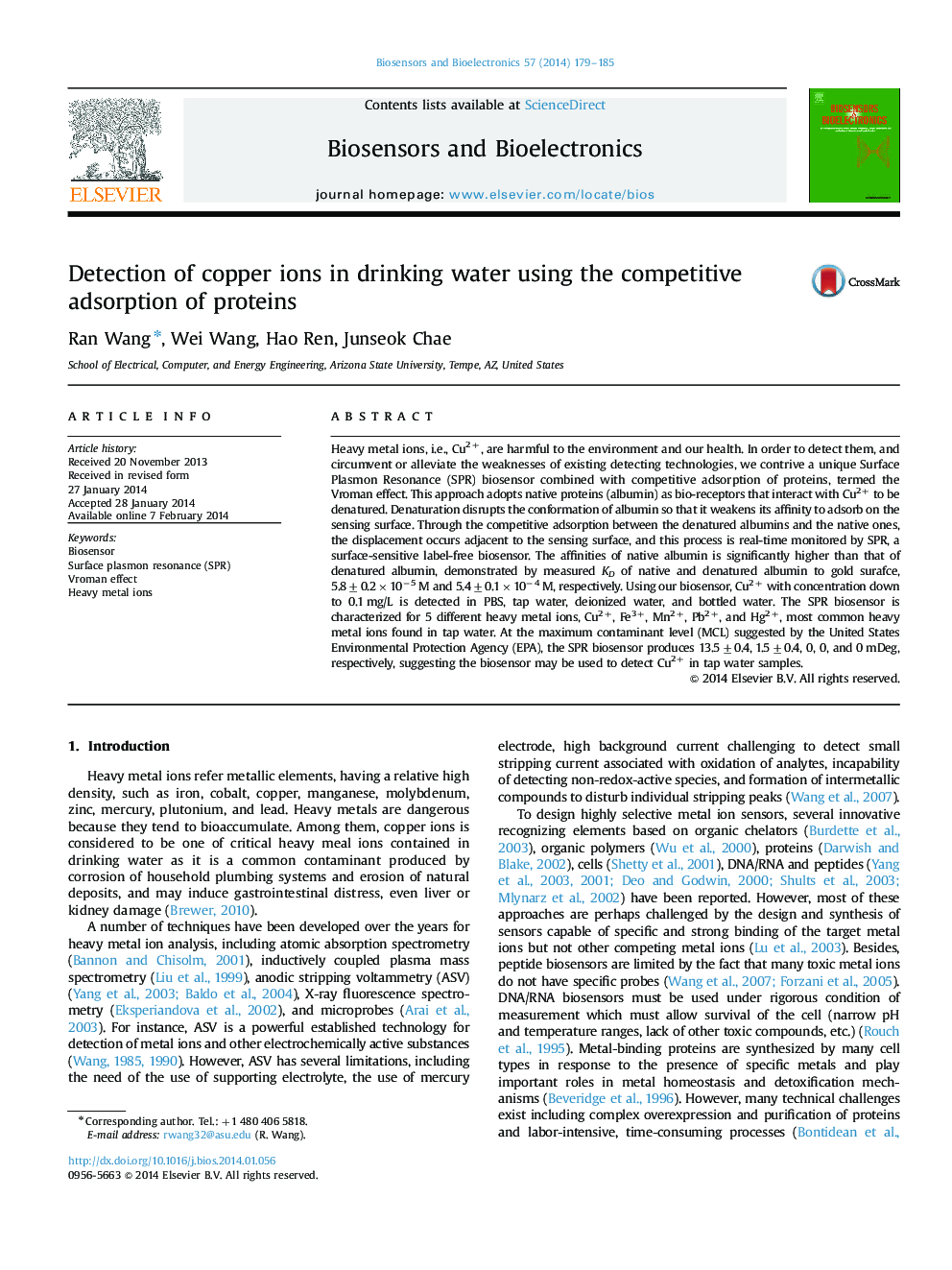| Article ID | Journal | Published Year | Pages | File Type |
|---|---|---|---|---|
| 7233565 | Biosensors and Bioelectronics | 2014 | 7 Pages |
Abstract
Heavy metal ions, i.e., Cu2+, are harmful to the environment and our health. In order to detect them, and circumvent or alleviate the weaknesses of existing detecting technologies, we contrive a unique Surface Plasmon Resonance (SPR) biosensor combined with competitive adsorption of proteins, termed the Vroman effect. This approach adopts native proteins (albumin) as bio-receptors that interact with Cu2+ to be denatured. Denaturation disrupts the conformation of albumin so that it weakens its affinity to adsorb on the sensing surface. Through the competitive adsorption between the denatured albumins and the native ones, the displacement occurs adjacent to the sensing surface, and this process is real-time monitored by SPR, a surface-sensitive label-free biosensor. The affinities of native albumin is significantly higher than that of denatured albumin, demonstrated by measured KD of native and denatured albumin to gold surafce, 5.8±0.2Ã10â5 M and 5.4±0.1Ã10â4 M, respectively. Using our biosensor, Cu2+ with concentration down to 0.1 mg/L is detected in PBS, tap water, deionized water, and bottled water. The SPR biosensor is characterized for 5 different heavy metal ions, Cu2+, Fe3+, Mn2+, Pb2+, and Hg2+, most common heavy metal ions found in tap water. At the maximum contaminant level (MCL) suggested by the United States Environmental Protection Agency (EPA), the SPR biosensor produces 13.5±0.4, 1.5±0.4, 0, 0, and 0 mDeg, respectively, suggesting the biosensor may be used to detect Cu2+ in tap water samples.
Related Topics
Physical Sciences and Engineering
Chemistry
Analytical Chemistry
Authors
Ran Wang, Wei Wang, Hao Ren, Junseok Chae,
